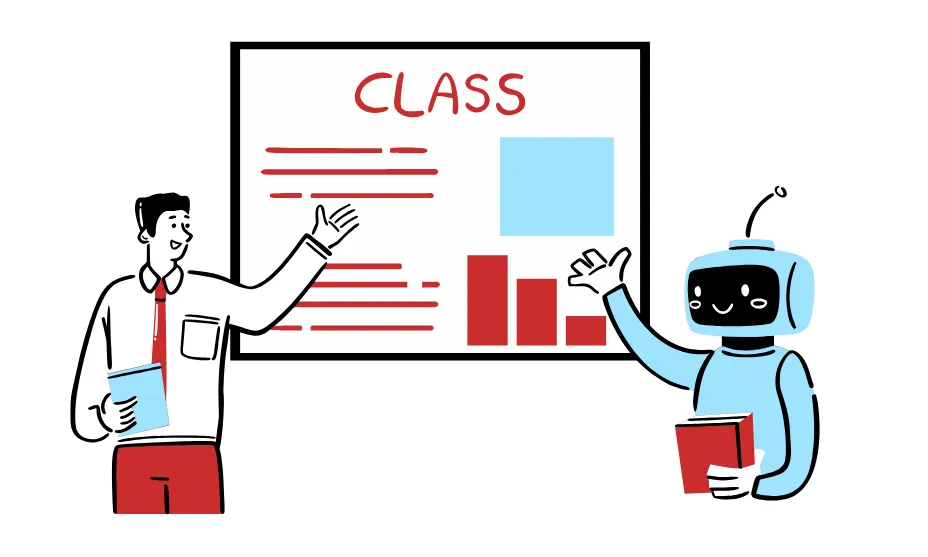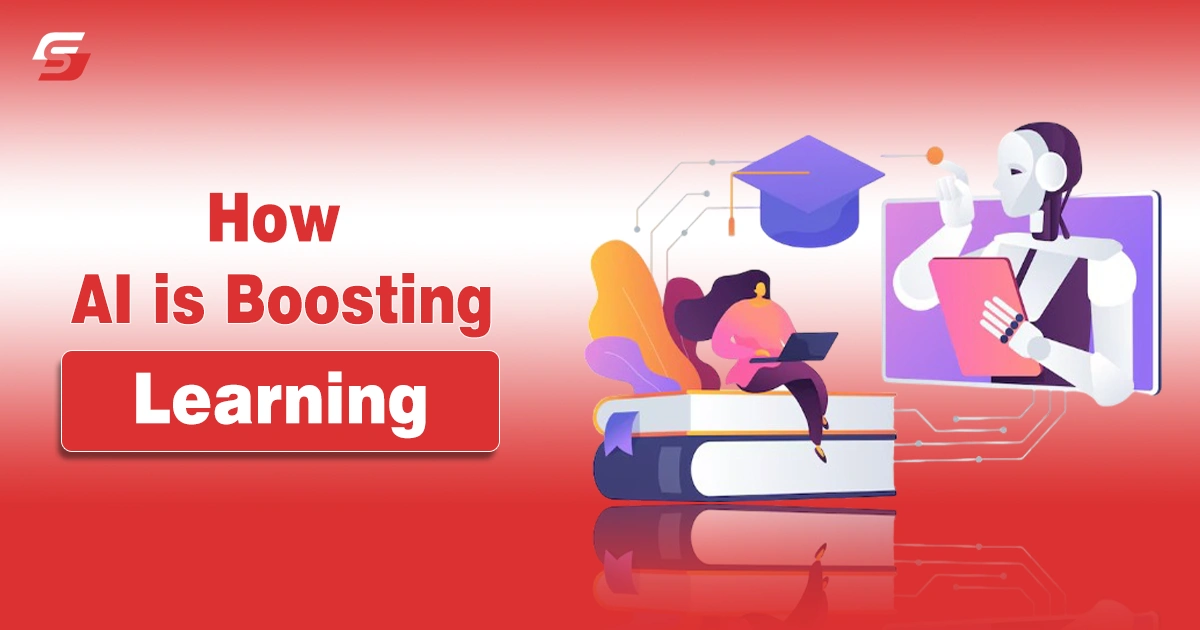Artificial intelligence (AI) is changing almost every part of our lives, and learning is no exception. In 2025, AI will become an important tool for students, teachers, and schools. It will make learning more personalized, easier for everyone, and better for students. Thanks to fast progress in AI-driven technology, students and employees can now learn new things and improve their skills in smarter, more efficient ways.
In this blog post, I will discuss how AI boosts learning in 2025 and beyond.
Let’s begin!
What Is Artificial Intelligence and Its Applications In Learning
The term artificial intelligence (AI) describes the replication of human intelligence in machines, software and tools that can analyze data, spot patterns and make decisions. AI has revolutionized education by improving accessibility, automating administrative duties, and personalizing learning experiences. AI-powered adaptive learning systems provide personalized study schedules and immediate feedback by customizing lessons according to a student’s strengths and limitations.

Ways Artificial Intelligence Is Boosting Learning
1. Personalized Learning Experiences
Personalized learning is one of the most important ways that AI improves education. Traditional learning models that say “one size fits all” don’t always work because students have different tastes, learning styles, and speeds. AI-powered systems look at how each student acts, what their strengths and weaknesses are, and then adjust the material to fit those needs.
Key Benefits:
Adaptive Learning Platforms: Adaptive learning platforms like PebbleGo use AI to change lesson plans based on how well each student is doing, making sure that the right level of speed and difficulty are used for each student.
Customizable Content Suggestions: AI chooses readings, workouts, and videos for each learner based on their specific needs.
Real-Time Feedback: AI-driven tutors can spot learners’ mistakes immediately and give advice on how to improve.
2. AI-Powered Virtual Tutors and Assistants
Virtual tutors that are run by AI have changed the game in education because they can help students whenever they need it without any help from a person. With platforms like TutorHunt, finding virtual tutors is easier than ever before.
Key Benefits:
24/7 Assistance: AI chatbots and voice helpers answer students’ questions right away.
Subject-Specific AI Tutors: Services like Socratic by Google or Microsoft Copilot give students personalised answers that help them understand difficult ideas.
Automated Essay Evaluation: AI tools check students’ written work for correct grammar, argument strength, and coherence, giving them helpful input.
3. Enhancing Engagement with Interactive Learning
Adding interactive aspects like gamification, augmented reality (AR), and virtual reality (VR) to learning makes it more fun.
Key Benefits:
Gamified Learning: AI turns lessons into games by using tasks, quizzes, and reward-based learning.
Immersive VR Education: AI-powered VR simulations let students learn about history, do science projects, or practice real-life skills in a virtual setting.
AI-Generated Study Plans: Customized study plans help students stay on track and make good use of their time.
4. Expanding Accessibility for Global Learners
AI is a key part of making online education easier for students from all walks of life, including those with disabilities and those who live in remote places.
Key Benefits:
Real-Time Language Translation: AI immediately removes language obstacles by providing translations and subtitles.
Text-to-Speech and Speech-to-Text Tools: With text-to-speech and speech-to-text tools, assistive technology can help students who are blind or deaf learn.
AI-driven Education for Rural Areas: Students in areas that don’t have enough teachers can get a good education through virtual classrooms that are driven by AI.
5. Streamlining Administrative Tasks
AI-driven technology is good for schools and institutions because it cuts down on work and lets teachers focus on teaching. Institutions are using tools like MySDMC SSO to manage different resources for students, teachers, and staff.
Key Benefits:
Automatic Grading: AI scores tests and homework, which saves teachers time.
Smart Scheduling: AI makes the best school schedules based on when students and teachers are available.
Predictive Analytics for Student Performance: AI predicts how well students will do in school and finds students who are at risk and need extra help.
6. AI-Driven Career Guidance and Skill Development
In addition to standard schoolwork, AI helps students plan their careers and build skills that will be useful in the future job market.
Key Benefits:
Career Suggestions Based on AI: AI looks at students’ skills and interests to suggest good career paths.
Skills Gap Analysis: AI finds skills that are missing and suggests classes or certifications that can fill them.
Mock Interviews with AI: Interview simulators that are driven by AI help job seekers practice and improve how they answer questions.
Conclusion
In 2025, AI completely changed education by making it more personalized, engaging, open, and efficient. As AI keeps improving, educators will be able to use smarter, more flexible systems tailored to their specific needs. AI keeps education fresh, open to everyone, and effective, whether it’s through virtual tutors, interactive learning tools, or automated administrative tasks.
AI isn’t just changing how we learn; it’s also changing how schools and other institutes will work in the future.


